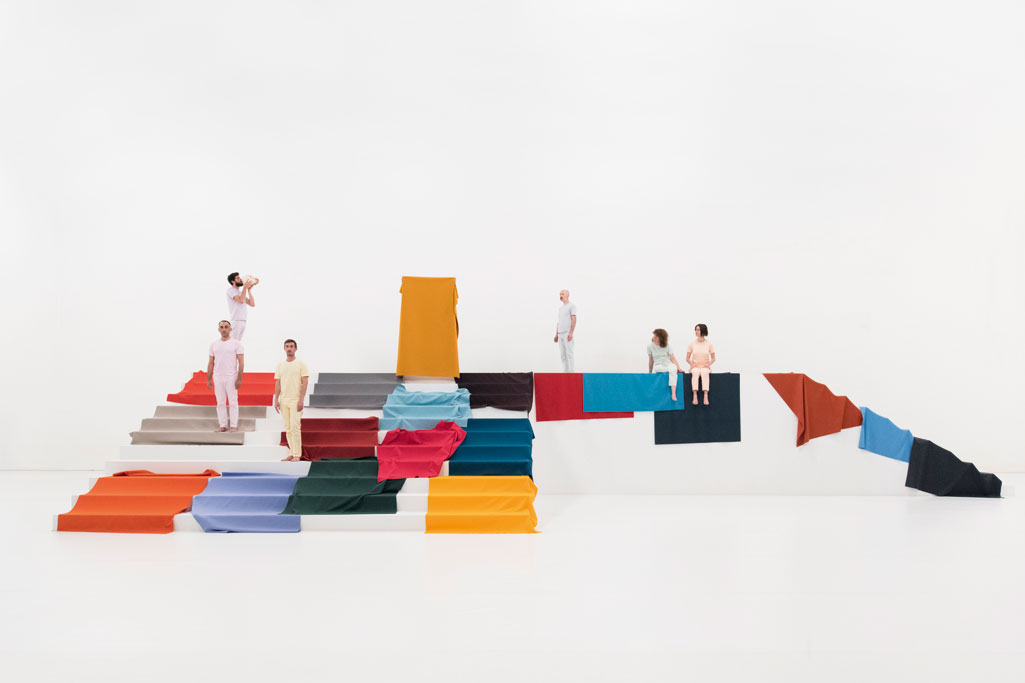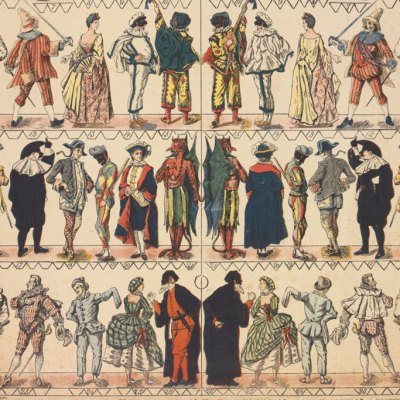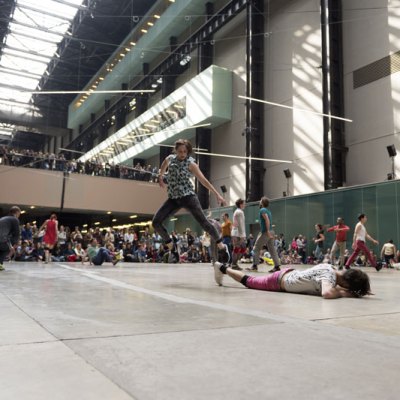How does your exhibition ‘It Has a Golden Sun and an Elderly Grey Moon’ at the Pérez Art Museum Miami (PAMM) link to your recent show in Canada?
I’m showing the same film at PAMM that was commissioned for my exhibition at the Power Plant in Toronto. But in each new venue I devise an architecture that relates to the film, and which is completely site-specific. The 22-minute film features two white staircases that are used as platforms for dancers holding coloured fabric; the installation includes a white staircase to reflect the film. In the PAMM building, however, the space is 12m high – the stairs are not accessible except for the first step which is used as a seat to watch the film.
I wanted to do something with the height of PAMM’s exhibition space – I liked the idea of separating it with a diagonal and having a black space and a white space. To get to the white space you must go through a space covered with bleached-out black fabric – a dark labyrinth with low lights. There are various objects on show here, including four drawings of dancers that sit on the floor resting against their shadow on the wall [as seen in Der Eigene Schatten (The Own Shadow)]. It’s a space in between two times – something was there before the sun bleached it out.
Installation view at the Neues Museum, Nuremberg, of Der Eigene Schatten (The Own Shadow), 2015. Courtesy the artist; Art: Concept, Paris; Pilar Corrias Gallery, London and Produzentengalerie, Hamburg
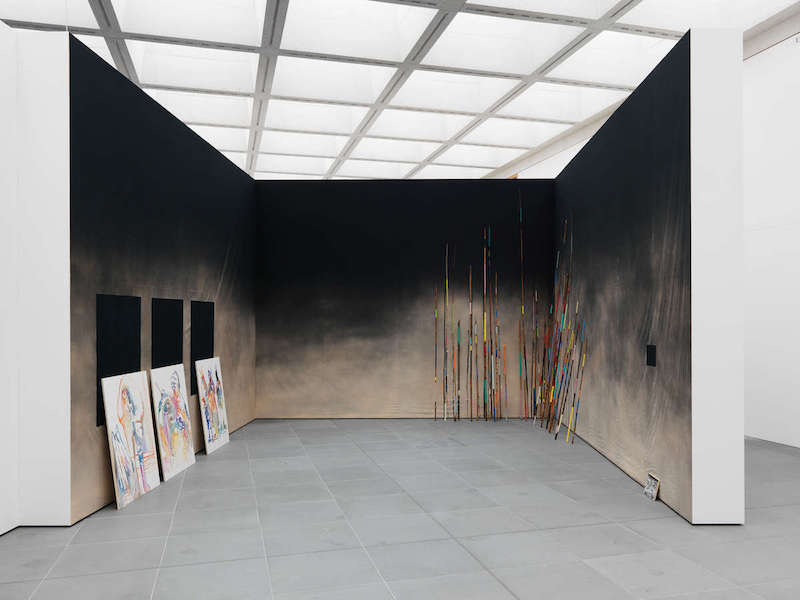
What sorts of ideas are driving such multifaceted work?
The film I’m showing in the white space is about community and living together. It’s a very abstract exercise on society – a reflection on how the notion of society, as something that carries the weak, has changed since I was born in the 1970s. In Europe we are getting further away from the question of how we should live together, how you trust a society. So my work revolves around symbols of trust and transformation – abstract images of power and living together.
Are you conscious of the different contexts or spaces within which you’re presenting something?
Yes, I like the film being shown in Florida because there is an architectural link for me. In Miami there are a lot of art deco buildings: stairs are very important to art deco and, of course, art deco affected architectural fashion, particularly in the 1980s. I also see a link with Miami Beach in the pastel colours the dancers wear in my film.
Still from It Has a Golden Sun and an Elderly Grey Moon (2016) by Ulla von Brandenburg. Digital colour video transferred from Super 16. Photo: Martin Argyrogla; courtesy the artist and Art: Concept, Paris.
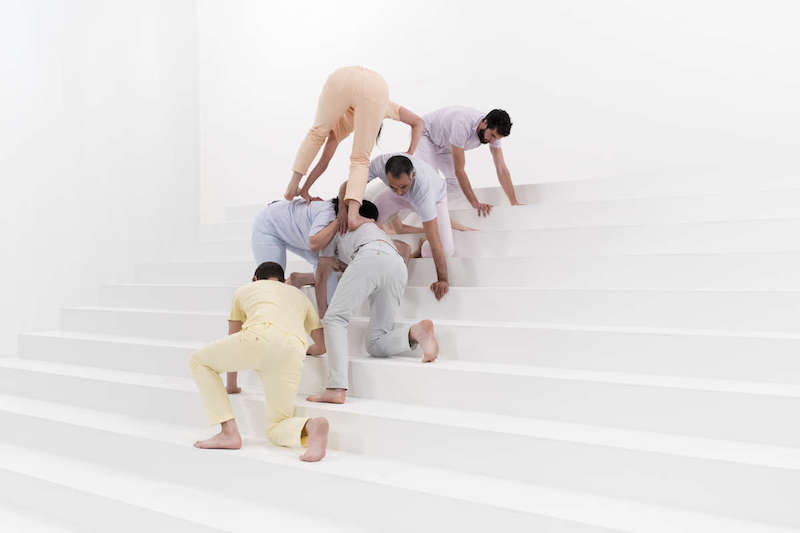
How important is theatre or performance to this piece?
First of all the film is shot in real time in 16mm – it’s my first real colour film – without any editing or cutting. This is to make it closer to performance, which you can’t edit. It’s important to me that it’s like theatre, that the audience enters two spaces – the film and installation – and, through overlapping objects, feels part of the work. The installation includes props on the stairs – blankets, conches, and a money box – that mirror those used in the film. They fall out of the film ready to be used. It’s all about a possible activation. What happens when the audience is on the stage and the actors are in the audience? That’s a moment I’m really interested in.
You draw on a range of historical references and traditions in your work. What are the themes or ideas behind this?
My way of working is very eclectic. I’m interested in the principle of collage, in bringing lots of things together from different times. In this piece there are so many influences. I was looking at modern dance, people like Mary Wigman and Loie Fuller. It’s about liberation – I’m interested in how movement and dance can free the body and mind. I was also looking into ritual and shamanistic dances, and Rudolf Steiner’s Eurythmy is also central to my work. Greek theatre is very important, too, especially the idea of mimesis. The architecture of theatres in ancient Greece, with the steps, really influenced my thinking. Then there is Adolphe Appia, who was also inspired by Greek theatre, and who produced set designs featuring a lot of stairs.
Still from It Has a Golden Sun and an Elderly Grey Moon (2016) by Ulla von Brandenburg. Digital colour video transferred from Super 16. Photo: Martin Argyrogla; courtesy the artist and Art: Concept, Paris.
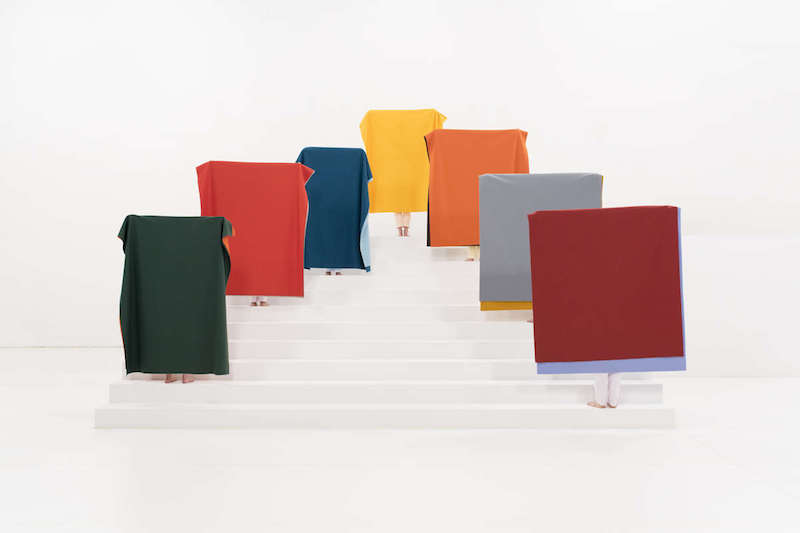
I also draw on the iconography of St Martin, known as the patron saint of
beggars because he shares his cloak: my film shows someone begging for money and in response one of the dancers shares his coloured fabric. When I was in New York there was someone asking for money on the street with a huge cardboard cup and it made a very aggressive sound. I wanted to have this sound of the money and the cup as a main rhythm for the dancers in the film. So in one section everybody’s moving to the sound of the money.
Does this work take on a different significance in the context of Art Basel Miami Beach (1–4 December)? Art fairs have a certain theatricality…
Yes, and it feeds into the social notion of how we live together. The fair is the peak of what you have in terms of a society, but all this luxury can only exist at the expense of those who are exploited. Money is not spread out equally: the gap between rich and poor is getting bigger. The art fair is one of the most explicit things in that sense. In Germany we have a lot of poverty, but in the US the differences are more extreme – it’s something I thought about in relation to showing this piece in the US.
What about the fact that you’re showing alongside Julio Le Parc, who is well known for his interactive installations?
I think it’s a good idea. Being shown alongside Julio emphasises the interactive elements of my own work. With both these exhibitions the public is asked to really engage with the artwork and the space – how do you enter a space, how do you feel being in different spaces? This is something Julio worked with – how to engage people.
Ulla von Brandenburg (b. 1974). Jan Northoff Photography
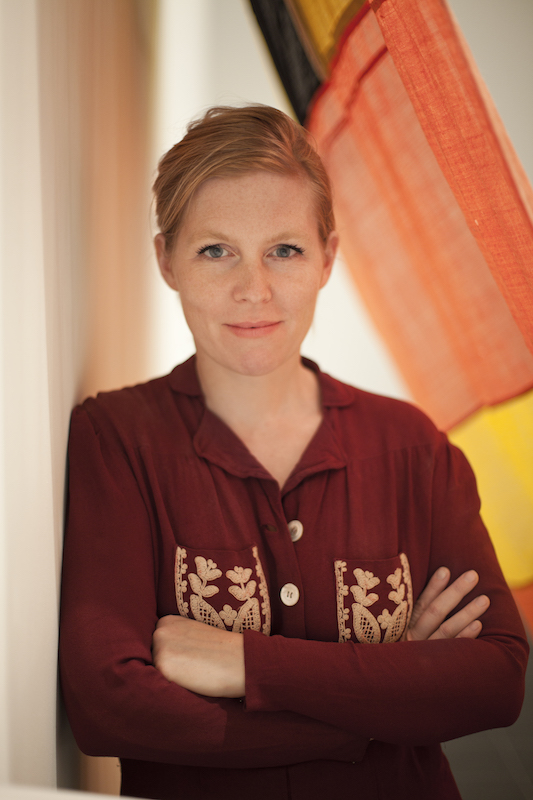
You were nominated for this year’s Marcel Duchamp Prize – what do such prizes mean for a contemporary artist?
It was great to be nominated. I’m really happy to be part of the show – this is the first year an exhibition of the nominees has been staged. This exhibition is the prize for me – the Centre Pompidou is one of the most visited museums in Europe, so many people will see my piece. This, more than the prize, is what it is about.
‘Ulla von Brandenburg: It Has a Golden Sun and an Elderly Grey Moon’ is at the Pérez Art Museum Miami until 25 June 2017. Art Basel Miami Beach is at the Miami Beach Convention Center from 1–4 December.
From the December issue of Apollo: preview and subscribe here
